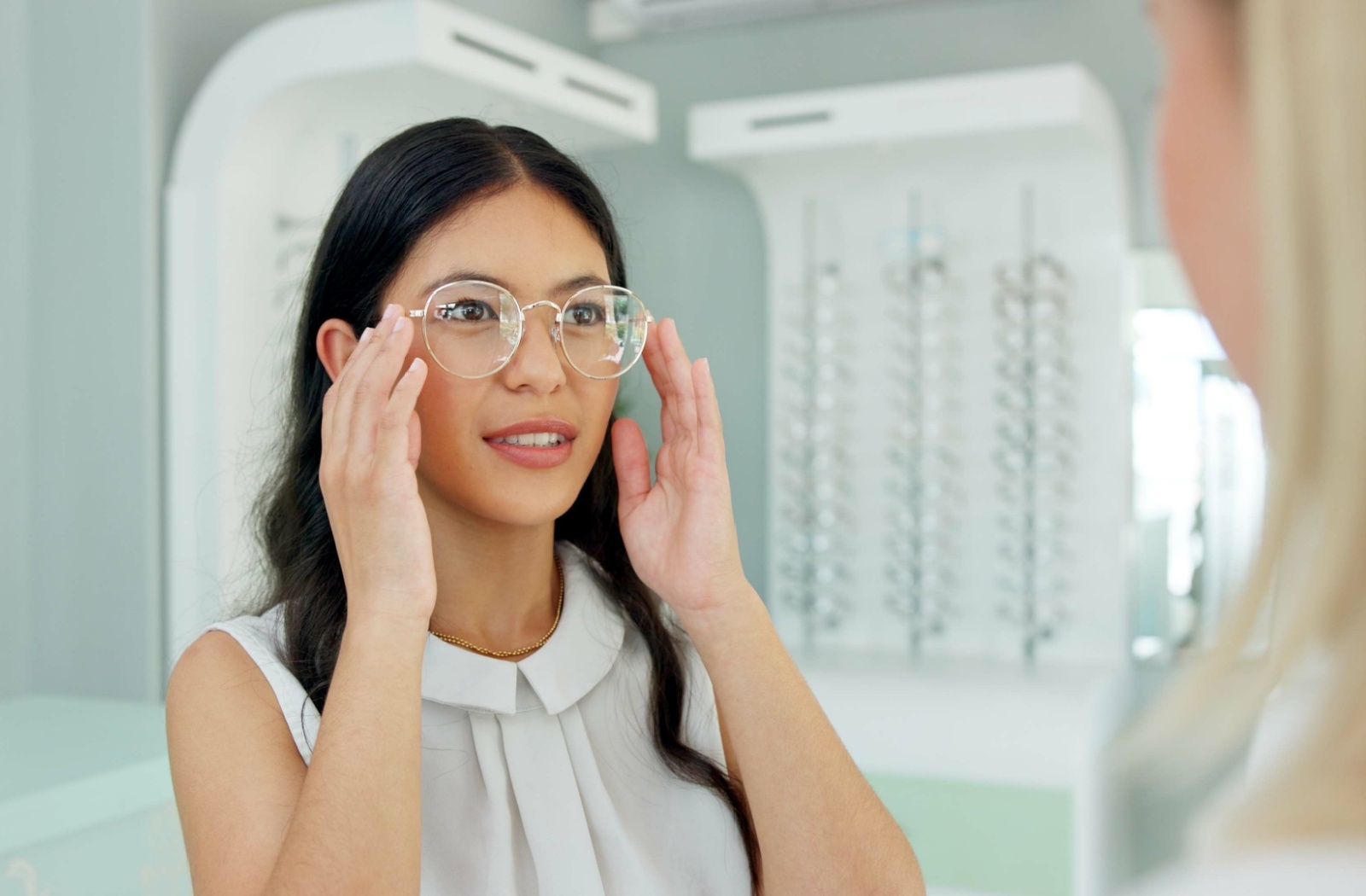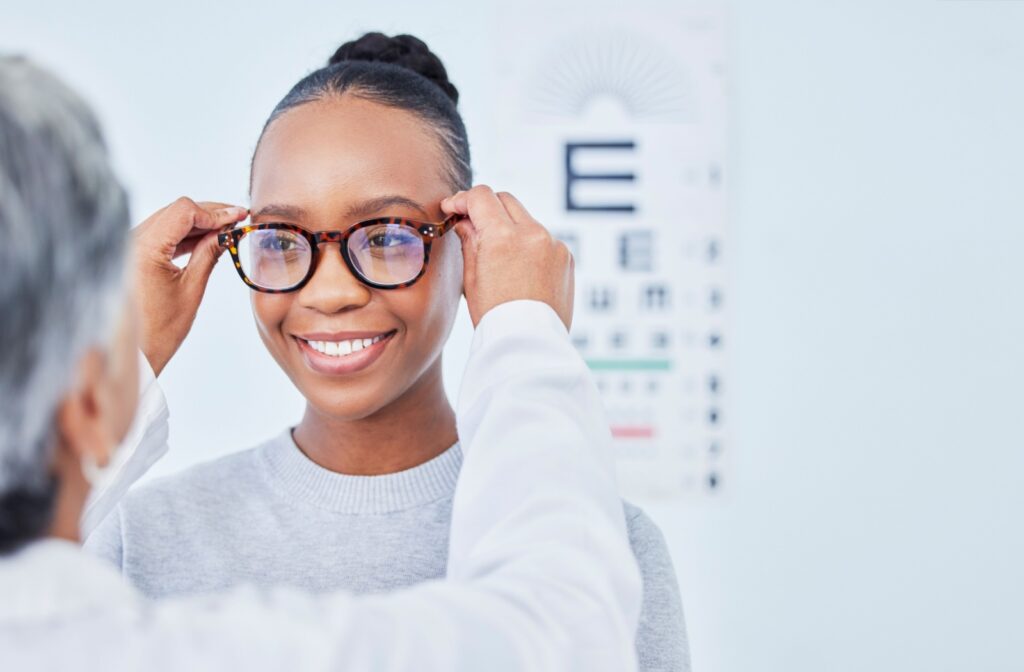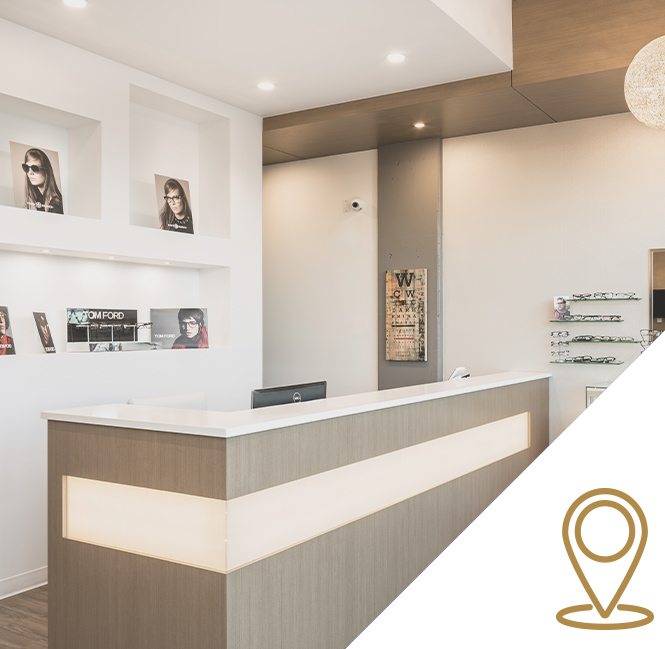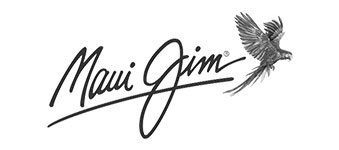Getting a new pair of glasses can feel like a fresh start—granting clearer vision, a new style, and perhaps even a little confidence boost. But just like breaking in a new pair of shoes, there’s often an adjustment period when it comes to getting used to your new eyewear.
Each person’s adjustment period depends on a number of factors, including the degree of the prescription change, the form and design of the lenses, and individual variance in the rate at which people adjust to changes in vision.
If you’re already a glasses wearer, or even just getting your first prescription, here’s what you need to know about the adjustment process before your next eye exam.
What to Expect
When you first put on a new pair of glasses, it’s not uncommon to experience some initial discomfort or visual distortion. This might include sensations like slight dizziness, headaches, or seeing through the lenses differently. Your eyes and brain need time to adapt to the changes in your vision and adjust to the new prescription.
This adjustment period can vary for each person and depends on several factors, such as the extent of the prescription change, the design and shape of the lenses, and individual differences in how quickly people adapt to visual alterations.
For some, the transition may be smooth and quick, lasting just a few hours. For others, it might take several days or even a couple of weeks to fully adjust to the new glasses. During this time, it’s important to wear your new glasses consistently to help your eyes adapt more effectively.
Common Symptoms During Adjustment
- Blurred Vision: When you first start wearing glasses with a new prescription, it’s common for your vision to be blurry as your eyes work to adjust to the new lens strength. This is a temporary phase as your eyes adapt to the clearer vision the lenses provide.
- Headaches: Experiencing headaches is not unusual when you begin using a new pair of glasses. This occurs because your brain is working overtime to process and interpret visual information differently and align it with your new, corrected prescription.
- Eye Strain: Just like any other muscle in your body, your eyes can grow fatigued as they adapt to new glasses. As your eyes work harder to focus through your lenses, you might experience a sensation of tiredness or discomfort. This sensation should diminish over time.
- Distortion: Some individuals may initially notice that their surroundings appear slightly distorted, warped, or slanted through their new lenses. This is a common response as your visual system gets accustomed to the changes in lens curvature and prescription strength.
How Long Will It Take to Adjust?
For most people, the adjustment period lasts between a few days to two weeks. However, the time frame can differ based on various factors:
- Prescription Strength: Significant changes in prescription may take longer to adjust to because your eyes need time to adapt to the new lens power. This adjustment period helps your visual system accommodate your new prescription.
- Type of Lenses: Multifocal or progressive lenses may require more time due to their complex visual fields, which blend multiple prescriptions into one lens. This complexity allows for seamless vision transition across different distances, but can take some getting used to as your brain learns to navigate these varied focus areas.
- Previous Experience: If you’re new to wearing glasses, the adjustment period might be slightly longer, since your eyes and brain are not accustomed to relying on corrective lenses. It may take a few days or weeks for your visual system to fully adapt to the enhanced clarity and depth perception that glasses provide.

Tips for Easing the Transition
- Wear Your Glasses Consistently: Make it a habit to wear your new glasses as much as possible throughout the day. The more consistently you wear them, the quicker your eyes will adjust to the new lenses and vision correction.
- Be Patient: Understand that it’s completely normal for your eyes to take some time to adapt to new glasses. Give yourself a few days to a week to adjust without putting undue strain or pressure on your vision.
- Follow Up: If you experience persistent discomfort or headaches beyond a couple of weeks, it’s important to follow up with your optometrist. They may need to tweak your prescription to better suit your vision needs or check for other underlying issues that could be affecting your comfort. Regular check-ups ensure your glasses are working effectively for your vision.
Ready For A New Pair of Glasses?
Adjusting to new glasses is a normal part of the vision correction process. While it might take a little time, the benefits of improved vision far outweigh the temporary discomfort. If you have concerns or prolonged symptoms, don’t hesitate to reach out to your eye care professional for guidance.
Are you ready for a new pair of glasses? Book an appointment with Willoughby Doctors of Optometry in Langley, BC today!











